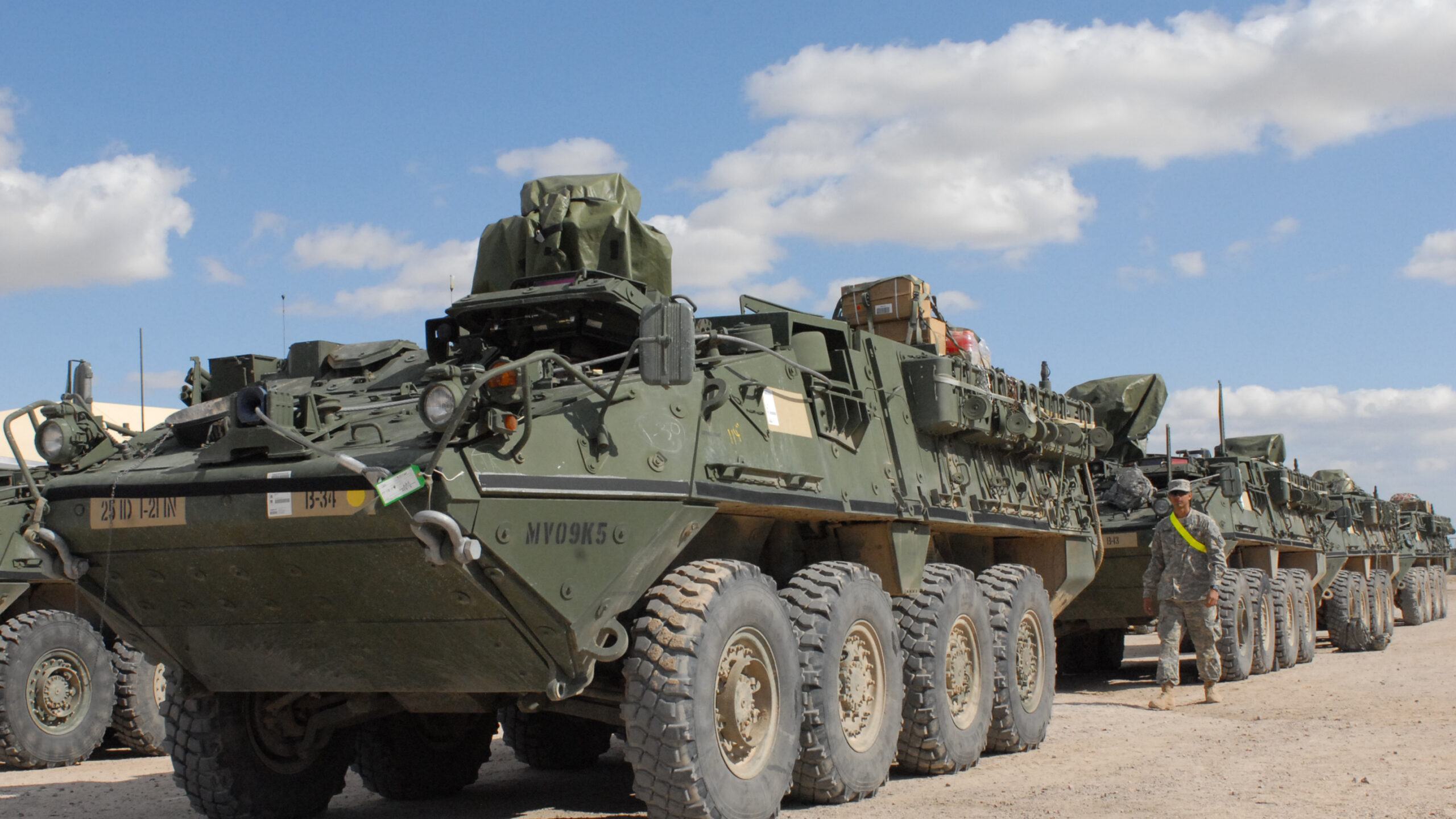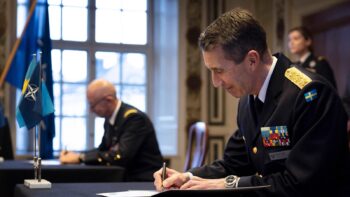
The US Army said it needs supplemental dollars to sustain the combat vehicles already delivered to Ukraine and backfill its stocks. (US DOD)
WASHINGTON — US Army leaders have publicly clamored for lawmakers to pass the stalled supplemental spending bill, in part, to ramp up artillery production lines. But two senior service officials told Breaking Defense they need the money for another critical task: backfilling US stocks of ground combat vehicles.
“There’s definitely a little bit of a [funding] backlog there that we want to catch up on,” Army acquisition chief Doug Bush told Breaking Defense Dec. 2 on the sidelines of the Reagan National Defense Forum. The service needs those extra dollars, he added, in order to get replacement vehicles on contract.
The money would also help Ukrainian forces, who received fleets of ground combat vehicles from US stocks, to maintain and repair the ones they’re sending into battle, according to Maj. Gen. Glenn Dean, the Army’s Program Executive Officer for Ground Combat Systems.
When the White House sent Congress a $105 billion supplemental budget request in October to cover military investments for Ukraine, Israel and the Indo-Pacific, it included $18 billion [PDF], in part, to replace defense articles taken from US stocks and cover defense services. Part of those dollars are aligned to help the Army replace some of the Bradley Fighting Vehicles, Strykers and Armored Multi-Purpose Vehicle (AMPV) already sent to Kyiv.
Since Russia invaded Ukraine in late February 2022, Washington has sent Kyiv $44.2 billion in military assistance to include an array of combat vehicles according to a Nov. 20 release [PDF].
- 186 Bradleys
- four Bradley Fire Support Team vehicles
- 189 Strykers
- 300 M113 armored personnel carriers
- 250 M1117 armored security vehicles
A chunk of those vehicles came from existing Army stocks as part of presidential drawdown packages, and contracts have already been issued for either one-to-one replacements or a newer variant. In the case of legacy vehicles, like the M113 armored personnel carrier, the Army is opting to refill its stocks with a newer vehicle (i.e., the AMPV).
However, the service has not been able to get all those combat vehicle replacements on contract yet and will need an undisclosed potion of that $18 billion supplemental pot. Dean said that the entire process is a bit fluid.
“There is equipment that has been provided to Ukraine that has not yet been resourced for replacement,” he told Breaking Defense during a Dec. 1 interview.
“Equipment is promised, for example, under a presidential drawdown directive [but] we are not allowed to request replacement until that equipment has physically been handed off to the Ukrainians,” Dean later added.
US stocks aside, the two-star general said supplemental dollars are also crucial for ensuring that the Army can continue delivering combat vehicle spare parts to Ukraine and keep the right people in place to fill those orders.
“There are people who work that process on the US side. It’s kind of a long, convoluted activity associated with reimbursing them for the work they do with Ukrainian-provided funds,” Dean added. “So, we can run into some sustainment challenges.”
Ground combat vehicle stock concerns are just one area to note as lawmakers decide the fate of the supplemental spending bill, a measure that some House GOP members have helped stall over concerns about the Ukraine-Russia war and a call to include additional dollars US southern border security.
For their part, Biden administration officials aren’t waiting to see how this shakes out and instead taking the dispute public. Last weekend, Defense Secretary Lloyd Austin said that halting financial support for Ukraine will hinder national security and the United States’ standing with allies and partners.
Then on Monday, Office of Management and Budget Director Shalanda Young sent top lawmakers a public letter warning if they don’t act now, funds for Ukraine will run out by the end of the month, “kneecap Ukraine on the battlefield” and hurt the US defense industrial base, including tactical vehicle and munition lines.
On Tuesday Pentagon Press Secretary Air Force Brig. Gen. Pat Ryder told reporters roughly $4.8 billion remains in “restored” presidential drawdown authority (i.e., the authority to pull from US weapons stocks), and only $1.1 billion in place to backfill what is pulled.






















